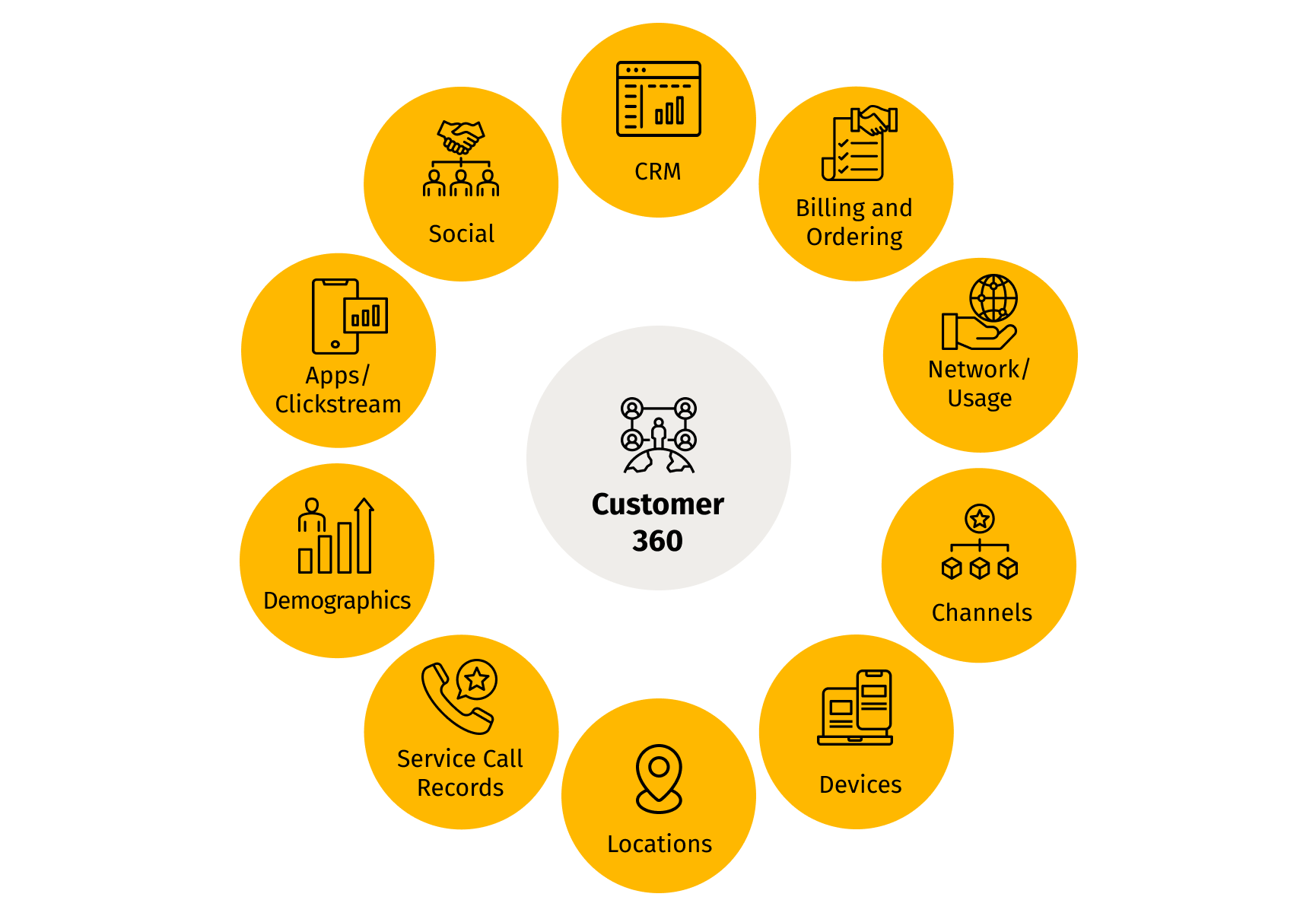
2023 trends: hyper-personalization in customer-facing technologies
Hyper-personalization has emerged as a key driver of customer engagement in the digital age, and in 2023, hyper-personalization technologies and strategies are expected to surge. By leveraging the latest advancements in artificial intelligence and machine learning, companies can now create highly customized and relevant experiences for each individual customer. The result is a paradigm shift in the way organizations approach customer engagement, empowering them to deliver unique and memorable experiences with greater efficiency, and at scale.
Gone are the days of generic, one-size-fits-all interactions. Today's customers expect a personalized experience that takes into account their behavior, preferences, and individual needs. By tapping into the vast amounts of customer data available, companies can deliver experiences that not only meet but exceed these expectations. The rise of omnichannel marketing has further facilitated the personalization process, enabling companies to create a seamless and integrated experience across all touchpoints. This includes in-store and online interactions, loyalty incentives, individualized search results, targeted email marketing, and personalized promotions.
Let’s dive deeper into hyper-personalization in customer-facing technologies and how companies can further leverage this approach to drive customer engagement, build loyalty, and uncover new growth opportunities.
The need for customer personalization
A customer 360° view comprehensively represents a customer's interactions, preferences, and history with a business. It gives businesses a complete overview of their customers, enabling them to create personalized experiences that cater to each customer's unique needs and preferences. No matter how big or small your business is, customers want to feel like they matter. In fact, research from Deloitte suggests that 80% of customers are more likely to purchase from a company that provides a 360° customer experience.The benefits of a customer 360° view are numerous, for businesses and customers alike. A customer 360° view can help businesses drive engagement, increase loyalty, average order value, and ultimately, revenue. When businesses have a full picture of their customers, they can create targeted marketing campaigns, personalized product and service offerings, and provide better customer service.
For customers, a customer 360° view enables a tailored experience that delights, rewards, and conveniences. Customers are no longer treated as faceless transactions to a business, but rather as valued individuals with unique wants, demands and desires. When businesses understand their customers in this way, they are able to provide them with relevant and personalized product recommendations, improve the efficiency of interactions and transactions, and make the buying experience convenient and enjoyable.
The seamless integration of the digital and physical worlds is crucial in delivering an exceptional customer-facing experience. By leveraging the latest technology, including analytics systems and AI, your business' mobile app or website can provide customers with a streamlined and delightful shopping experience that will keep them coming back for more.
Hyper-personalization and customer-facing solutions
We’ve already established that customer intelligence is the key to staying ahead of the competition, but what about the technology needed to make it happen? Your organization should put cutting-edge customer acquisition strategies in place by merging first- and third-party customer information, developing sophisticated statistical models for evaluating potential leads, and integrating these models with transactional systems, marketing automation tools, and external advertising platforms. This approach results in substantial conversion rate increases, utilizing custom-designed customer intelligence platforms powered by big data analytics and actionable decision automation techniques. Predictive analytics models can provide marketing teams with valuable customer insights, yet many organizations encounter difficulties in consolidating multiple scores and effectively implementing all of these indicators.

Next best action and predictive analytics
Next best action (NBA) and predictive analytics are two more useful tools of personalization in today's digital age. NBA uses customer data and insights to determine the most relevant and valuable action to take in real time to engage with a customer. Some examples of this include personalized product recommendations, upselling, and establishing the preferred method of contact (i.e. push notifications, emails, or phone calls). Predictive analytics uses a customer’s historical data and statistical models to make predictions about future customer behavior. By leveraging NBA and predictive analytics together, companies can gain valuable insights into their customers, anticipate their needs, and make data-driven decisions that drive customer experience.
AI-powered search
The initial stage of the customer acquisition process, commonly referred to as the "discovery stage," presents a considerable opportunity to implement highly personalized strategies to attract, retain, and satisfy customers. Leading the charge in product discovery innovation are cutting-edge technologies such as visual search, semantic vector search, and targeted recommendations tailored to individual customer preferences.

Visual search
The utilization of visual search technology empowers customers to efficiently locate the products they're looking for, even in instances where they may struggle to articulate the product specifications through language. Visual search is capable of discerning the most intricate visual details within an image and matching them to the available offerings in a catalog by leveraging the power of advanced AI-driven visual similarity algorithms. The process is effortless for customers since all they need to do is upload an image depicting their sought-after product into the search interface. Then they receive accurate results, along with recommendations for products of similar style and design, within a matter of seconds.
Semantic vector search
Semantic vector search is a departure from traditional keyword-based search methodologies. The engine leverages advanced deep learning-based natural language processing capabilities to comprehend the intended meaning and objective behind a customer’s search query, no matter how abstract it might be. This process relies on semantic models from both catalog data and the customer’s purchasing behavior, rather than relying on the more traditional approach of word matching and counting. The next generation of semantic vector search engines is rapidly evolving, delivering highly relevant, timely, and personalized results that are closely aligned with the customer’s purchasing intent.
AI chatbots
Customer engagement extends beyond traditional content marketing, email campaigns, and social media networking. That’s why conversational AI has become an essential component of digital commerce these days, with virtual assistants like Amazon’s Alexa or Google Assistant leading the charge. Technological advancements in speech recognition and natural language processing technology have enabled customers to engage with AI programs as if they’re talking to a real person. These technological advancements have also led to promising use cases for voice-powered retail shopping. By leveraging AI/ML-based technology, a customer’s mobile device can essentially become a virtual shopping assistant that is committed to learning their shopping preferences, offering tailored recommendations, and providing insightful answers to contextual inquiries.

Omnichannel loyalty platform
An omnichannel customer loyalty platform is another powerful tool for companies looking to deliver a personalized experience to their customers. Omnichannel loyalty platforms provide businesses with a unified view of customer interactions by integrating customer data from various in-store, online, and mobile channels. This wealth of data can be leveraged to create highly personalized customer experiences. Businesses can analyze a customer's past purchases, browsing history, and social media activity to gain insights into customer preferences and interests, allowing for customized product offerings, promotions, and incentives across multiple channels, including email, SMS, and social media. This data-driven approach can help businesses build stronger relationships with customers.
Moreover, an omnichannel loyalty platform enables businesses to create a seamless customer journey across multiple touchpoints. Businesses can provide a consistent and personalized experience beyond a single channel by leveraging customer data from all channels. This leads to increased customer engagement, drives sales, and builds brand loyalty.
Inventory Management
A crucial aspect of personalized customer experience is real-time inventory management. Digital commerce leaders are leveraging next generation, API-driven inventory management systems, such ascloud-nativee and open source solutions, or headless cloud OMS platforms like Fluent Commerce, to provide a robust omnichannel experience. This includes offering near real-time global inventory availability feeds, estimated delivery dates, and a variety of delivery and pickup options, such as reserve in store, ship from/to store, buy online, pickup in store, buy in store, ship to home, and so on.
Additionally, the integration of search is vital, since it allows customers to quickly discover products in nearby stores, compare digital and in-store only options, and view estimated delivery dates through search filters. Starting with a high-performance omnichannel inventory engine and modernizing the customer fulfillment ecosystem by replacing legacy monolithic order management systems is crucial to ensuring real-time access and inventory information across channels.
Augmented reality and the Metaverse
By leveraging cutting-edge technologies such as augmented reality (AR) and the metaverse, companies can create truly immersive and personalized customer experiences. AR, for example, allows for integrating digital content into the physical world, creating interactive and engaging experiences. By analyzing user data, including location, search history, and user behavior, AR can deliver customized recommendations and product offerings that are tailored to the individual's preferences. Additionally, AR can be used to simulate product usage in real-world settings, enabling customers to visualize and test products before making a purchase.
The metaverse, a virtual world that combines augmented reality, virtual reality, and other digital technologies, takes personalization to the next level. In the metaverse, users can create and customize avatars representing their virtual identity and interact with digital content in a highly personalized and customized manner. The metaverse enables businesses to create unique digital experiences that match customers' interests, preferences, and behaviors. Companies can use the metaverse to build immersive virtual showrooms, host virtual events, and create interactive games that promote their products or services.
Composable commerce
Integrating these best-in-class customer experience elements together in a unified, flexible, and scalable system is easy with a MACH-powered composable commerce platform. Composable commerce enables businesses to select best-of-breed commerce components from different third-party vendors and weave them together - or compose them - into a custom application for specific business purposes. MACH architecture leverages Microservices architecture, API-first communication, Cloud scalability and efficiency, and Headless speed and flexibility. In this way, you have the power to deliver extraordinary customer experiences, and respond to customer demands as quickly as they arise with cutting-edge technology solutions for each area of the customer buying journey.

Hyper-personalization trend: Conclusion
By leveraging the full potential of AI, ML, and the cloud platforms that make it easy to deliver their value, companies can create unique experiences for their customers, improving customer satisfaction and loyalty. As these technologies continue to evolve, we are excited to see how companies push the boundaries of what's possible with hyper-personalization, and how it will shape the future of customer engagement across industries.
Grid Dynamics is a digital-native technology services provider that accelerates growth and bolsters competitive advantage for Fortune 1000 companies. We have more than 15 years of experience in customer personalization and are ready to continue leading businesses to the forefront of their industries in 2023 and beyond.
Still have questions about hyper-personalization in customer-facing technologies? We’d love to hear from you!
